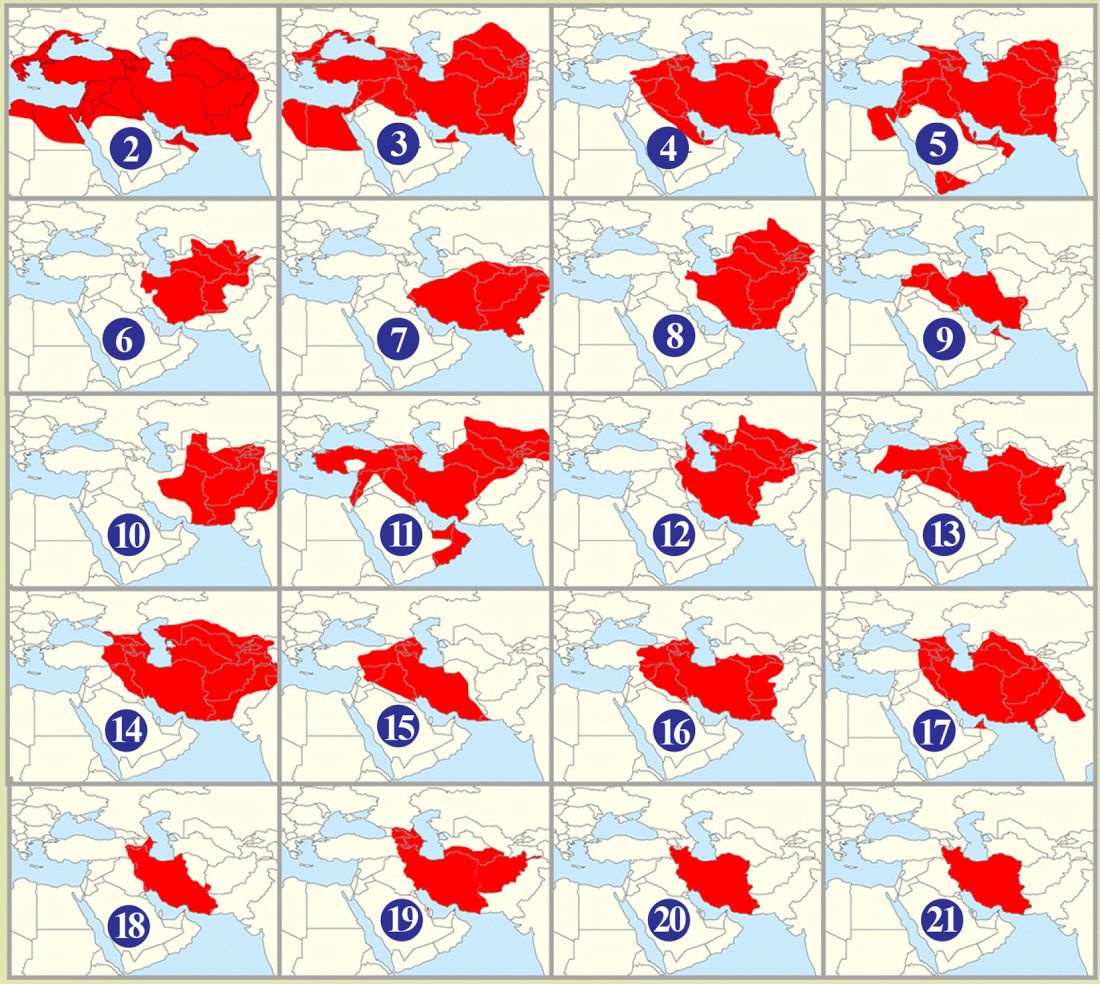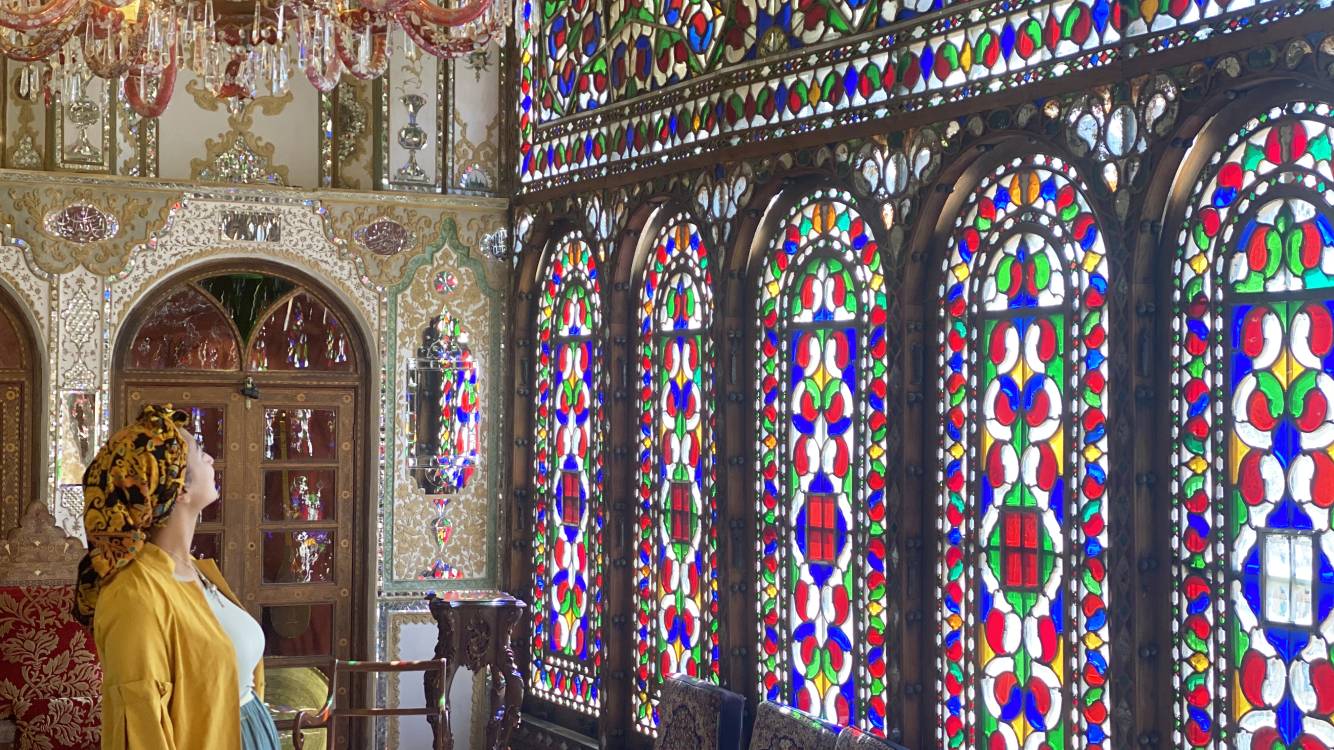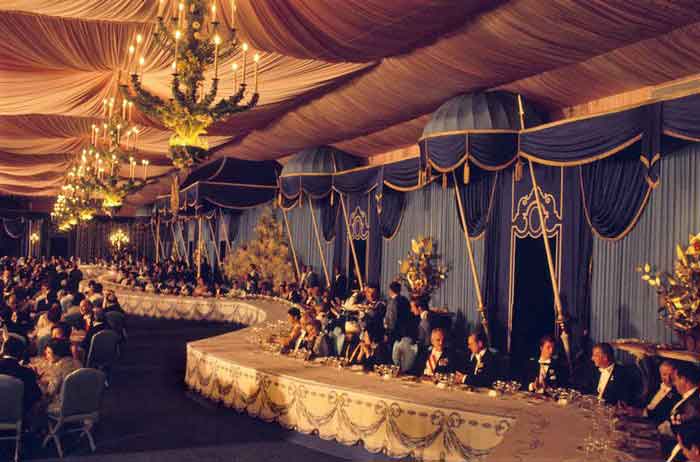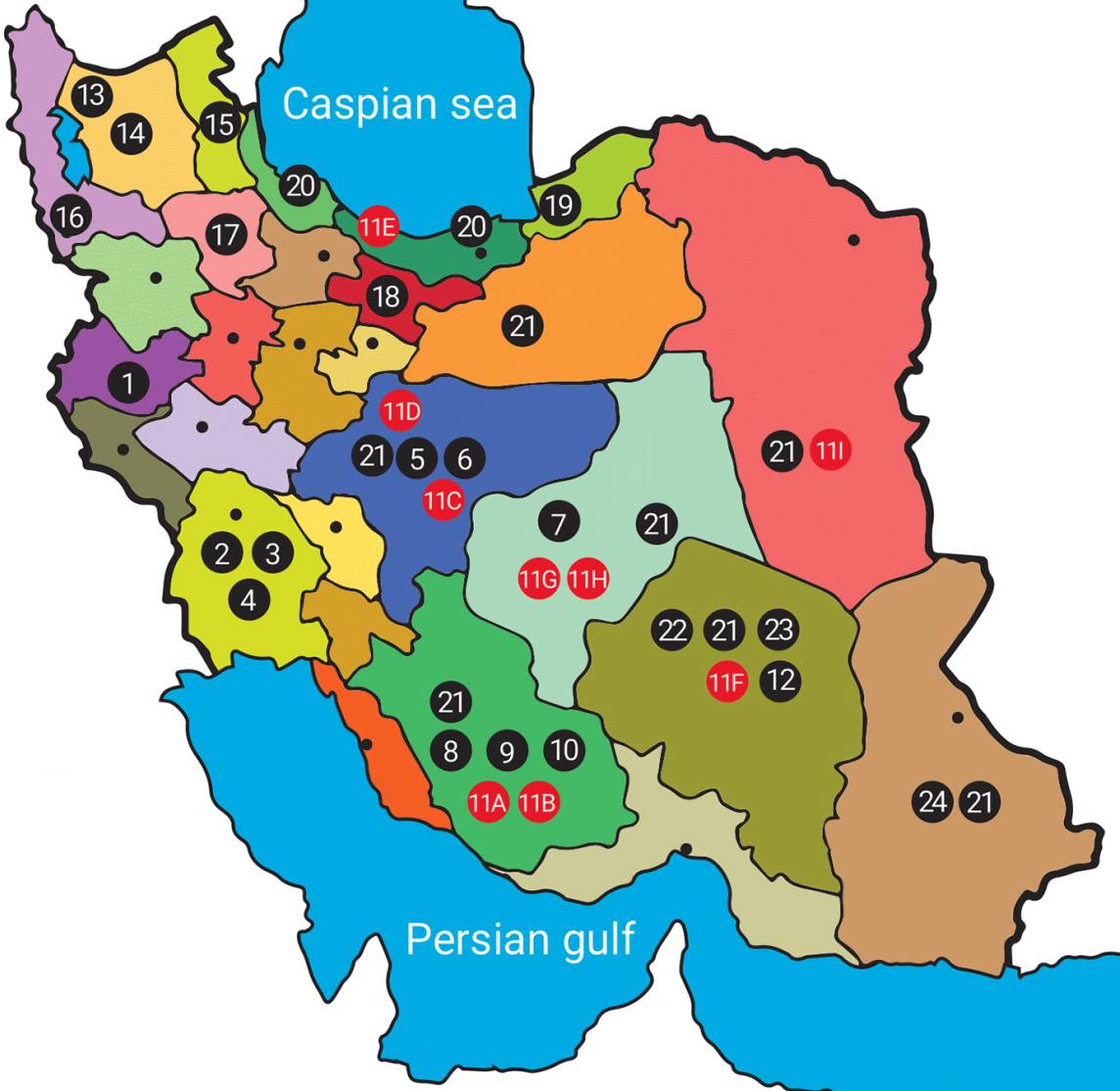Click above on the corresponding number of the map to know more about the location.
Bisotun (Kermanshah)
- archaeological site with the bas-relief of Darius the Great when he became king of the Persian Empire (521 BC)
- image and description on the UNESCO website
Susa
- superimposed urban settlements from 5000 BC until the 1300's
- image and description on the UNESCO website
historical hydraulic system (Shushtar)
- marvellous engineering of Darius the Great in 500 BC
- image and description on the UNESCO website
Tchogha Zanbil (Susa)
- ruins of the holy city of the Kingdom of Elam in 1250 BC
- image and description on the UNESCO website
Meidan Emam (Naqsh-e-Jahan Square Isfahan)
- one of the largest city squares in the world and an outstanding example of Iranian and Islamic architecture built in the 17th century by Shah Abbas the Great
- read my travel story
- image and description on the UNESCO website
Jameh or Masjed-e Jāmé Mosque (Isfahan)
- the Mosque, that took twelve centuries to be completed, covers over 20.000 m2 and is the first Islamic building adapting the four-courtyard layout of Sassanid palaces to Islamic religious architecture
- read my travel story
- image and description on the UNESCO website
historic city of Yazd
- intelligent use of limited available resources in the desert with a qanat system developed to draw underground water
- read my travel story
- image and description on the UNESCO website
Sassanid archaeological landscape (Fars region)
- eight archaeological sites with fortified structures, palaces and city plans of the Sassanian Empire (226 to 650 BC)
- image and description on the UNESCO website
Persepolis (Shiraz)
- palace complex and royal city built in 518 BC by Darius the Great
- read my travel story
- image and description on the UNESCO website
Pasargadae
- earliest capital of the Achaemenid in 600 BC
- image and description on the UNESCO website
Persian gardens (in red)
- nine gardens in nine provinces showing the diversity of evolved designs adapted to different climate conditions
- image and description on the UNESCO website
cultural landscape of Maymand (Kerman)
- agro-pastoralist villagers practicing a highly specific three phase regional variation of transhumance that reflects the dry desert environment
- image and description on the UNESCO website
Armenian monastic ensembles of Iran (Jolfa)
- three monasteries showing universal value of the Armenian architectural and decorative traditions
- image and description on the UNESCO website
historic Bazaar complex (Tabriz)
- capital during Safavid and commercial center on the Silk Road showing the traditional and cultural trade systems
- image and description on the UNESCO website
Sheikh Safi al-din Khanegah (Ardabil)
- place of spiritual retreat in the Sufi tradition using Iranian traditional architectural forms
- image and description on the UNESCO website
Takht-e Soleyman (Takah)
- Zoroastrian sanctuary partly rebuilt in the Mongol period (1300) and a temple of the Sasanian period (6-700)
- image and description on the UNESCO website
Soltaniyeh (Zanjan)
- octagonal mausoleum constructed in 1302
- image and description on the UNESCO website
Gonbad-e Qabus (Gorgan)
- 53 meter high tomb built in 1006 BC
- image and description on the UNESCO website
Hyrcanian forests
- a unique forested massif stretching along the Caspian Sea dating back 25 to 50 million years
- image and description on the UNESCO website
Persian qanat (Yazd, Kerman, Kashan)
- ancient qanat system of tapping alluvial aquifers at the heads of valleys and conducting the water along underground tunnels by gravity
- image and description on the UNESCO website
Dasht-e Lut desert (Kerman)
- spectacular examples of aeolian yardang landforms
- image and description on the UNESCO website
Bam and its cultural landscape (Kerman)
- fortified town built during Achaemenid period (600 to 400 BC) in vernacular technique using mud layers
- image and description on the UNESCO website
Shahr-i Sokhta (Zahedan)
- mudbrick city founded around 3200 BC representing the emergence of the first complex societies
- image and description on the UNESCO website




